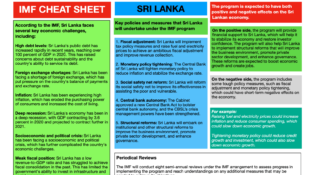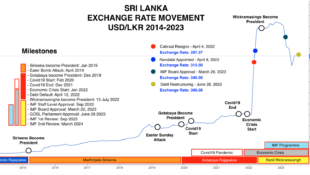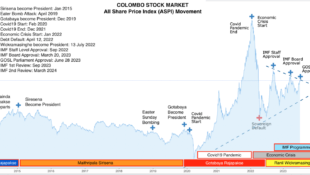
Feeding a growing global population using conventional agricultural practices is leading to adverse environmental impacts. There is a call for alternative forms of agriculture that address social, economic, and environmental aspects of sustainability. A transition to sustainable agricultural systems is required for social and economic equity, food security, conservation of biodiversity, and provision of ecosystem services in Sri Lanka. Scientific knowledge should be translated to decision makers and the policy developers should abandon the conservative segregation of the environment and agriculture as separate domains and accept these aspects under one holistic system.
Agroforestry is a complex subject: it is an amalgam of many subjects. For centuries, Agroforestry has been artfully practiced throughout the world, especially in the developing countries of the tropics. Lately, the underlying principles of these time-tested practices, as well as the scope for applying scientific principles to improve them, are being explored vigorously across the world. It has now become obvious that the science of Agroforestry does involve a harmonious blending of both biophysical and social sciences.
Cultivating trees and agricultural crops in intimate combination with one another is an ancient practice that farmers have used throughout the world. Tracing the history of Agroforestry, King (1987) states that in Europe, until the Middle Ages, it was the general custom to clear-fell degraded forest, burn the slash, cultivate food crops for varying periods on the cleared area, and plant or sow trees before, along with, or after sowing agricultural crops.
Traditional practices
There are innumerable examples of traditional land-use practices involving combined production of trees and agricultural species on the same piece of land in many parts of the world. Many factors and developments in the 1970s contributed to the general acceptance of Agroforestry as a system of land management that is applicable to both farm and forest. These factors included: • the re-assessment of development policies by the World Bank • a

Fruits and vegetables
reexamination of forestry policies by the Food and Agricultural Organisation (FAO) of the United Nations • a reawakening of scientific interest in both intercropping and farming systems; • the deteriorating food situation in many areas of the developing world; • the increasing spread of tropical deforestation and ecological degradation. Against this backdrop of concern for the rural poor, the World Bank actively considered the possibility of supporting nationally oriented forestry programs. As a result, it formulated a Forestry Sector Policy paper in 1978.
Building upon the success of these scientific studies, agricultural scientists began investigating the feasibility of intercropping in plantation and other tree crop stands as well as studying the role of trees and shrubs in maintaining soil productivity and controlling soil erosion. Livestock management experts also began to recognize the importance of indigenous tree and shrub browse in mixed farming and pastoral production systems.

Terraced cultivation
Agroforestry is a collective name for land-use systems and technologies where woody perennials (trees, shrubs, palms, bamboos, etc.) are deliberately used on the same land-management units as agricultural crops and/or animals, in some form of spatial arrangement or temporal sequence. In Agroforestry systems there are both ecological and economical interactions between the different components.
Agroforestry systems aim to maintain or increase production (of preferred commodities) as well as productivity (of the land). Agroforestry can improve productivity in many different ways. These include: increased output of tree products, improved yields of associated crops, reduction of cropping system inputs, and increased labour efficiency. In Agroforestry systems there are three basic sets of elements or components that are managed by the land user, namely, the tree or woody perennial, the herb (agricultural crops including pasture species), and the animal. Agroforestry is building a layered garden from ground cover to canopy trees that are all useful to farming groups.

Bee-Keeping
One of the most important aspects of Agroforestry is diversification. Diversification can also reduce the risk of pest attack. This includes considering the particular space the tree occupies in the farming system, as well as the total number of trees of that species that need to be planted. Getting this right is important to maximize the ecological and socioeconomic benefits from the tree itself. In comparison to annual crops, the use of perennial tree crops is less expensive in terms of inputs: time, seeds, fertilizer, and land. Agroforestry system, which uses perennial plants (both tree, shrub and cover crops), provides food and useful materials for humans (fiber, medicinal, dyes, edible leaves, spices, honey, fuel wood, fodder for livestock, sap products) as well as benefits to the other plants (soil fertility).
Agroforestry landscapes have an important function in improving soil and water conservation. Agroforestry systems can reduce soil erosion caused by wind and water, and prevent the runoff of sediment and potential pollutants into rivers, whilst keeping nutrients such as fertilizer in farmland. Agroforestry systems slow water runoff and enhance infiltration, stabilize soil and reduce river bank erosion.
Multiple benefits
Many mushrooms or fungi are deliberately grown within forest habitats, a practice defined as ‘Fungi Agroforestry’. Bee-keeping not only provides honey but bees pollinate fruit trees, other perennial and annual crops. These pollination services can be much more important economically than the honey that is also produced. Productivity and household income can therefore be much enhanced through cultivating and retaining trees in landscapes to provide habitat for bees. When designing Agroforestry systems, the use of a range of tree species flowering at different times can provide better forage for bees.

Yoghurt by SLAF
Resin from pine is an example of an Agroforestry and forestry product widely used for industrial purposes; for example, resin tapping in many remote villages in China has significantly contributed to local livelihoods. Fish farming or aquiculture plays a significant role in livelihood development. Aquiculture in Agroforestry practices can involve paddy rice cultivation with fish culture and trees, as well as fish ponds in farmland with trees. Trees support the banks of ponds and rice paddies, and enhance the habitat for fish through providing organic nutrition and supporting the presence of microorganisms. All the above concepts will generate jobs, and people need not come to the big cities for work.
Agroforestry provides an important habit for the cultivation of medical plant products that may be herbs or trees. Many medicinal products are derived from trees and much traditional

Increased yield
health care around the world is supported by their cultivation. The wide cultivation and utilization of medicinal plants in Agroforestry contributes to health support systems locally. By growing a range of species that fruit in different seasons, it is possible to provide important sources of nutrients over a large part of the year, combating malnutrition. The use of trees and shrubs as animal feed is probably as old as the domestication of animals. What trees are appropriate as fodder depends on the digestive system of the animal. Many tree (and other) legumes provide nutritious animal fodder.
Groups of farmers working together (e.g., collections of user groups) can establish small-scale enterprises or small processing plants more easily than individual farmers can. This is a good practice for Sri Lankan farmers during these challenging times. Smallholders in developing countries often find it hard to sell their products in the market for a good profit because of poor infrastructure. The transaction costs in reaching markets are therefore high for small volumes of product, and there is often no guaranteed sale on reaching the market. We have seen farmers on TV complaining at the Damublla Economic Centre, and wasting fruits and vegetables. Grouping together to transact sales is a way to deal with these constraints. Sufficient quantities of products can be delivered to meet the demands of large buyers and bargaining power is increased. There is no wastage.

Content cows give quality milk
Fuel wood and charcoal also play a significant role in food and nutritional security as they produce energy and generate high income in spite of the introduction of modern energy sources. There is an immense potential for combating Climate Change in developing countries by building resilient agro ecosystems which actively sequester carbon. To achieve desired social and environmental benefits, designing the right Agroforestry system by selecting the most suitable plants and management practices is a must. Improving the knowledge of beneficial traits of the existing indigenous plants used in Agroforestry and development of new cultivars from those indigenous species, availability and easy access to high quality planting material and the safe transport of superior cultivars developed in different parts of the world are also important.
I have been privileged to visit the Sri Lanka Air Force Station at Morawewa. SLAF has prudently been engaged in diverse planting and are very much self-sufficient in terms of some food produce. This camp harvests and packs their own paddy in addition to making fresh yoghurt in their dairy section. This is a shining example for other entities to follow. Where the future of Sri Lanka tourism is concerned Agroforestry can create a concept of holidays where guests can stay in Agroforestry areas and cherish the natural habitat, eating the menu items fresh from the fields and dairy farms. This is already in practice in developed nations. We have acres of uncultivated lands and forest cover. Agroforestry will benefit Sri Lanka immensely.
https://www.dailynews.lk/2022/06/27/features/281727/importance-agroforestry-sri-lanka
 would enable you to enjoy an array of other services such as Member Rankings, User Groups, Own Posts & Profile, Exclusive Research, Live Chat Box etc..
would enable you to enjoy an array of other services such as Member Rankings, User Groups, Own Posts & Profile, Exclusive Research, Live Chat Box etc.. 
 Home
Home
















